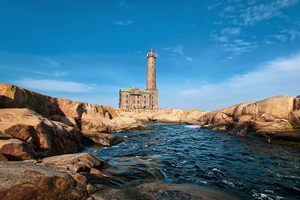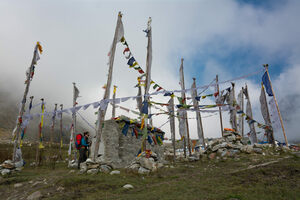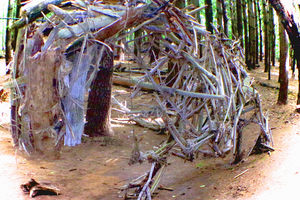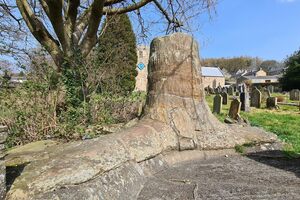Bengtskar Lighthouse in Rosala, Finland

Countless shipwrecks littered the sea in Finland’s western archipelago during the late 1800s and early 1900s. On New Year’s Day in 1905, a newly constructed steamship became the latest vessel to succumb to the shallow waters.
In 1906, construction on a lighthouse to aid travel along the trade route began in haste. In a mere nine months, the lighthouse was erected and composed of granite and bricks. It was lit for the first time on December 19, 1906.
Workers and their families who remained in the area maintained the lighthouse and worked in shifts handling the light and foghorns. The wives tended to the living quarters and taught the children in a small school.
When World War II erupted, Finland was forced to defend Bengtskär. The island’s location not only served well for guiding ships through the labyrinth of islands, but it also was a safeguard from attacks by way of the Gulf of Finland. It’s importance led to Russia launching an invasion of the island.
Approximately 35 Finnish soldiers were stationed on the island. When the invasion began, the radio operator on the island called for support. Within minutes, the coastal artillery team began firing. Within hours, navy ships and planes converged on Bengtskär. When the battle was over, the Finns had secured the island.
The next day, Soviet forces bombed the lighthouse.
When it was all said done, and the Soviet Union pulled out from the Hanko region and Finland regained control of its lands and water. About 32 Finnish soldiers and 60 Russian soldiers were killed in the short Battle of Bengtskär.
After the war, the lighthouse was mostly left to deteriorate. Restoration efforts did not begin until 1992. It took three years to renovate the structure. In 1995, the island opened as a museum to the lighthouse and its wartime history.
The old apartments in which the lighthouse keepers and their families lived have been converted into hotel rooms.
Deep window seals running up along the spiraling, steel staircase contain small exhibits and artifacts paying homage to the island’s dramatic past. A military bunker and other war relics can still be explored on the island.





